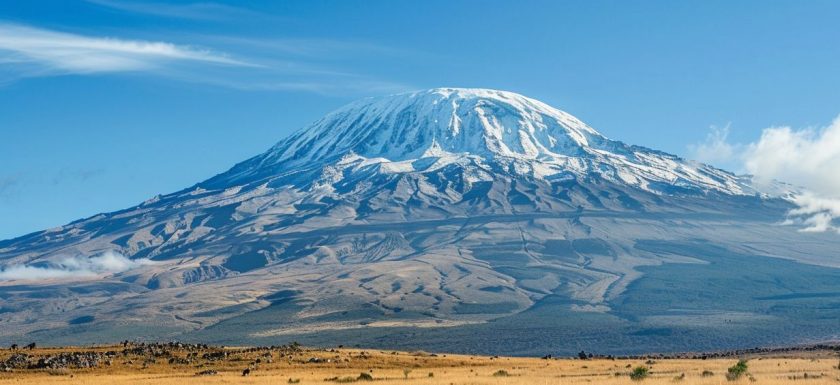
Have you ever wondered what the climate is like on Kilimanjaro?
This article covers everything you need to know about staying warm on Africa’s highest peak, from the factors affecting temperature to the gear you need for cold temperatures.
Discover the temperature range, coldest time of year, and essential clothing items for surviving the cold nights.
Whether you’re preparing for a climb or just curious about the chilly conditions this guide will help you navigate the cold on Kilimanjaro.
Key Takeaways:
- Kilimanjaro experiences a wide temperature range, with the summit being significantly colder than the base.
- The coldest time of year on Kilimanjaro is from December to February, with temperatures dropping below freezing and wind chill making it feel even colder.
- Proper preparation and gear, such as warm clothing and sleeping gear are essential for surviving the cold temperatures on Kilimanjaro and preventing hypothermia and frostbite.
What is the Climate Like on Kilimanjaro?
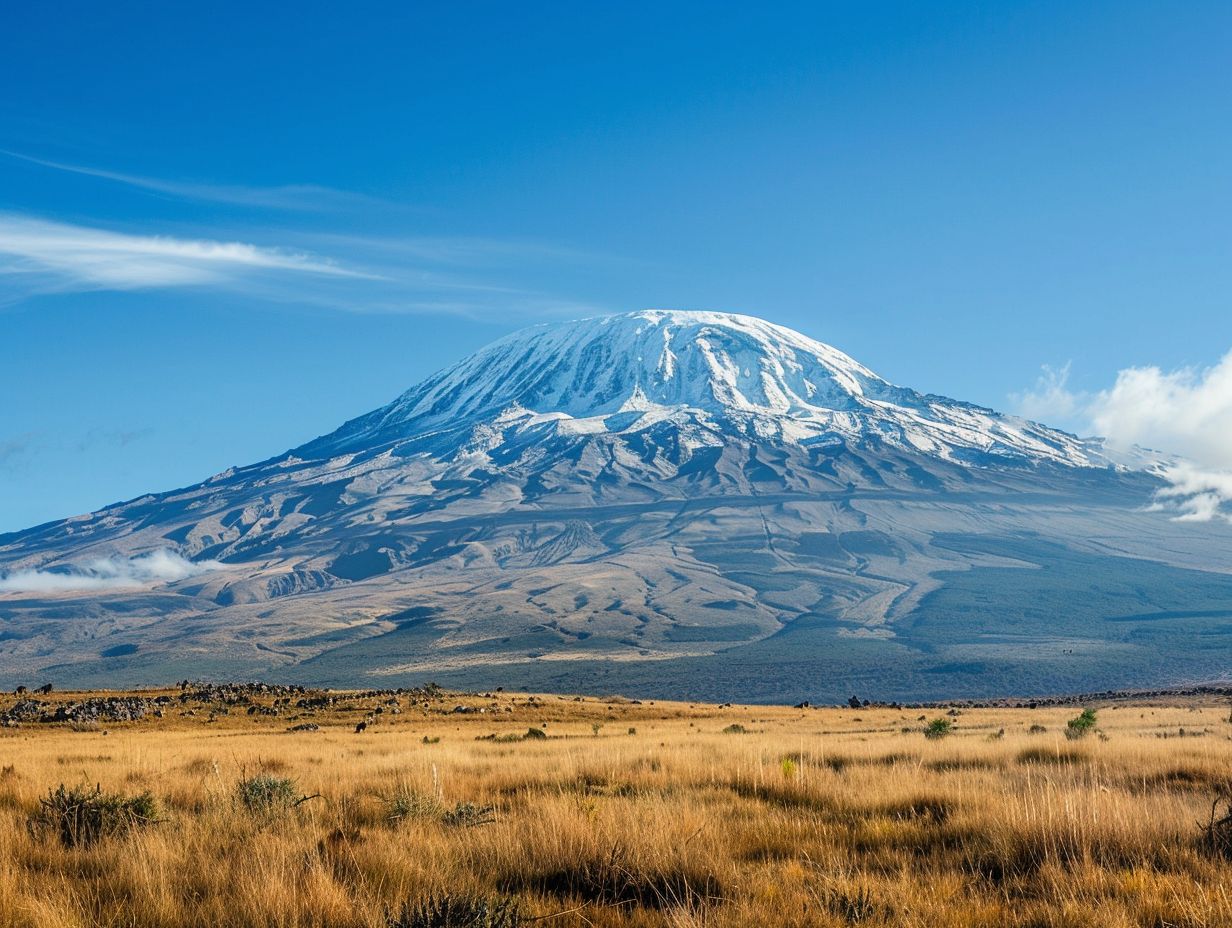
Mount Kilimanjaro experiences a diverse climate due to its varying altitude and ecological zones creating distinct weather patterns across its slopes.
At the base of the mountain lies the tropical zone, characterized by warm temperatures and high precipitation levels, supporting lush rainforests and diverse wildlife, such as monkeys and vibrant bird species.
Ascending further, the mountain transitions into the temperate zone where temperatures decrease with altitude leading to cooler and moister conditions. This zone is home to unique plant species like giant lobelias and groundsels, adapted to the changing climate.
As climbers climb higher, they enter the arctic zone, marked by freezing temperatures and sparse vegetation, eventually giving way to the snow-capped summit of Uhuru Peak.
Factors Affecting Temperature on Kilimanjaro
The temperature on Mount Kilimanjaro is influenced by several factors, including altitude, prevailing winds and the specific climatic zones found on the mountain.
Altitude plays a significant role in determining the temperature changes on Kilimanjaro. As you ascend the mountain the air becomes thinner, which leads to a decrease in temperature. On average, for every 1,000 meters increase in altitude, there is a temperature drop of about 6.5 degrees Celsius.
The prevailing winds also contribute to the regulation of temperatures on the mountain, with the Easterly trade winds from the Indian Ocean bringing moisture and moderating temperatures on the lower slopes.
How Cold Does It Get on Kilimanjaro?
Kilimanjaro can experience extremely cold temperatures, especially at higher altitudes near the summit making proper gear and preparation crucial for climbers attempting the climb.
The summit of Kilimanjaro is known for its bone-chilling weather conditions with temperatures dropping well below freezing. Climbers tackling this majestic peak often encounter frostbite-inducing cold that demands specialized cold-weather gear and acclimatization strategies.
It’s essential for climbers to have insulated clothing, high-quality thermal layers and reliable footwear to combat the frigid conditions. Beyond clothing, proper hydration and nutrition are vital to maintain energy levels and keep the body warm in the icy atmosphere.
In such extreme cold, even minor mistakes in gear selection or preparation can have serious consequences, underlining the critical role of adequate preparation in a successful ascent.
Temperature Range on Kilimanjaro
The temperature range on Kilimanjaro can vary significantly, from freezing cold at higher altitudes to relatively warmer conditions in the lower ecological zones.
At the summit of Kilimanjaro, temperatures can plummet well below zero degrees Celsius, posing extreme challenges to climbers due to the thin air and severe cold. In contrast, the foothills of the mountain experience milder temperatures, making it a stark difference from the icy peaks.
Temperature fluctuations on Kilimanjaro are not only influenced by altitude but also by the ecological zones climbers pass through.
From the alpine desert to the montane forests, climbers encounter varying weather conditions, ranging from frosty mornings to scorching afternoons depending on the time of the year.
Coldest Time of Year on Kilimanjaro
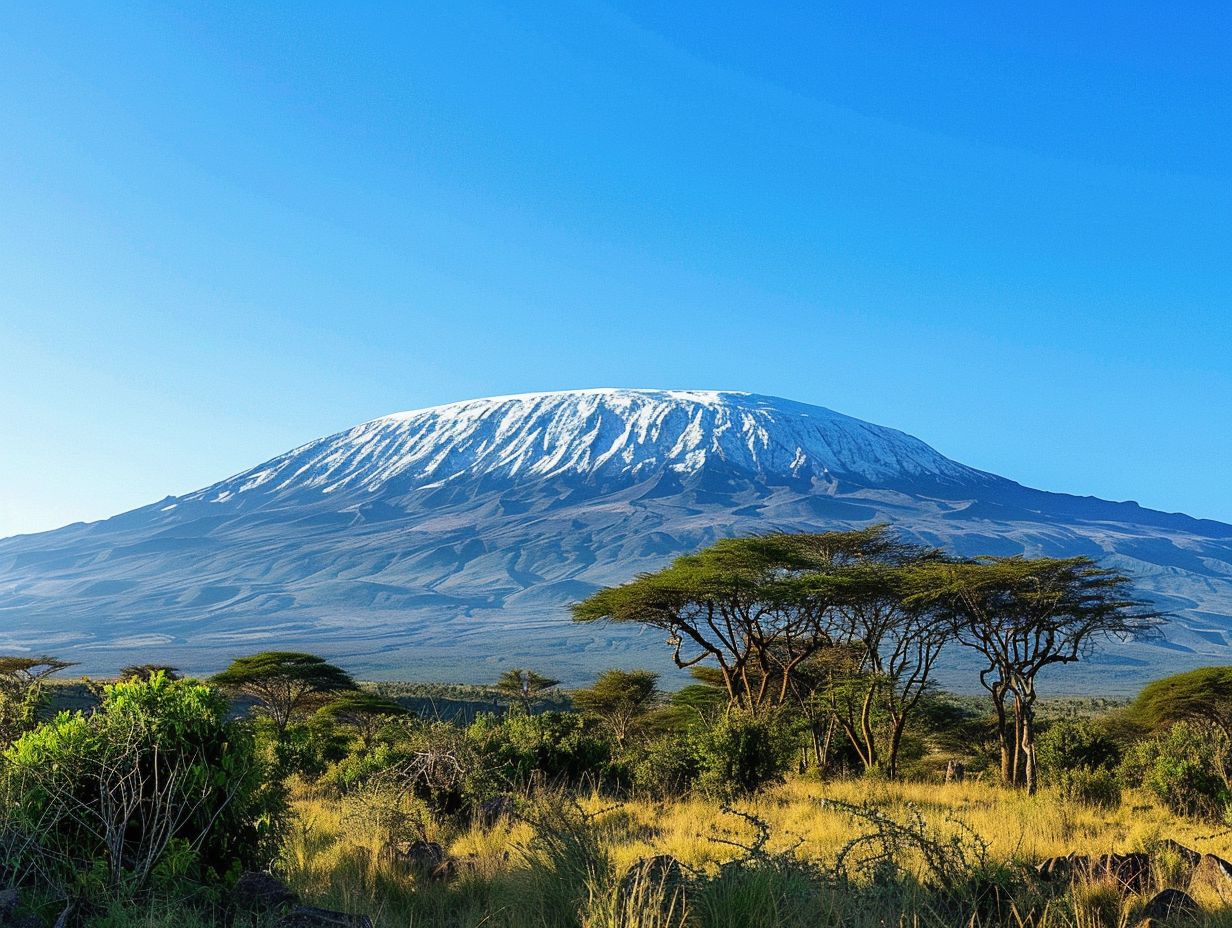
The coldest time of the year on Kilimanjaro typically occurs during the dry season when temperatures can plummet, especially at night and at higher altitudes, posing additional challenges for climbers.
During this period, the mercury can drop significantly, reaching freezing temperatures even during the day.
The chilling winds further intensify the cold, making it crucial for climbers to be equipped with proper thermal gear and insulation.
Although the days might offer some warmth, the nights are bone-chilling requiring climbers to brace themselves against the harsh conditions.
This extreme cold not only tests the physical endurance of climbers but also impacts the overall climbing experience.
What Gear Do You Need for Cold Temperatures on Kilimanjaro?
Proper gear is essential for tackling the cold temperatures on Kilimanjaro, including insulated clothing, sturdy boots and high-altitude gear to ensure climbers stay warm and safe during the ascent.
When preparing for a climb to the summit of Kilimanjaro, it’s crucial to have the right equipment that can withstand the extreme weather conditions.
- Insulated layers are vital to retain body heat and protect from frostbite.
- Sturdy, waterproof boots with good traction are necessary for the rugged terrain.
- High-altitude gear such as oxygen tanks and face masks are essential for higher altitudes.
Investing in quality thermal gloves, woolen hats and moisture-wicking socks can make a significant difference in maintaining warmth and preventing cold-related injuries on the mountain.
Essential Clothing Items for Cold Weather
When preparing for cold weather on Kilimanjaro, climbers should pack essential clothing items such as thermal layers, windproof jackets and insulated gloves to combat the freezing temperatures encountered during the climb.
Layering is key to staying warm and comfortable in the varied weather conditions on Kilimanjaro. The base layer should be moisture-wicking to keep sweat away from the body, while the mid-layer provides insulation.
A down jacket is recommended for the outer layer to shield against wind and precipitation. For the lower body, thermal pants are crucial, along with waterproof trousers for snow or rain. Accessories like woolen hats, scarves and quality socks are essential to prevent heat loss from the extremities.
Recommended Sleeping Gear for Cold Nights
To ensure restful nights during the climb, climbers should invest in recommended sleeping gear such as insulated sleeping bags, sleeping pads and warm blankets to stay comfortable and warm in the cold mountain nights.
Quality rest is crucial for climbers attempting the grueling ascent of Kilimanjaro, where the temperature drops significantly at higher altitudes. To combat the bone-chilling cold, having the right sleeping equipment is paramount.
Insulated sleeping bags with high thermal ratings are essential to trap body heat and prevent hypothermia. Pairing them with thick sleeping pads not only adds a layer of cushioning for comfort but also provides insulation from the frozen ground.
It’s also advisable to carry additional warm blankets or sleeping bag liners to ensure a cozy night’s sleep amidst the icy mountain ambiance.
Furthermore, temperature management is key to staying safe and healthy while camping on Kilimanjaro. Layering up with moisture-wicking base layers, thick socks, and a beanie can further enhance warmth retention.
Invest in high-quality insulated water bottles to prevent liquids from freezing overnight, ensuring hydration even in the coldest of temperatures.
By taking these measures and investing in top-notch sleeping gear, climbers can optimize their chances of restful sleep and peak performance during their Kilimanjaro expedition.
How to Prepare for Cold Temperatures on Kilimanjaro?
Preparing for cold temperatures on Kilimanjaro involves physical training to adapt to high altitudes and cold conditions, as well as implementing effective acclimatization strategies to minimize the impact of extreme weather on climbers.
Physical conditioning is crucial to build endurance and strength for the challenging terrain and high altitudes. This includes cardio exercises, strength training, and regular hikes with elevation gain to mimic the conditions on the mountain.
It’s also essential to focus on cold weather clothing, such as layered clothing, insulated jackets, gloves, hats, and proper footwear to stay warm and protected against frostbite and hypothermia.
Altitude adaptation is another key aspect to consider. Climbers should gradually ascend to higher altitudes to allow their bodies to acclimatize to the reduced oxygen levels. Hydration, proper nutrition and adequate rest play a significant role in altitude adaptation.
Climbers can utilize altitude sickness medications and supplements under the guidance of medical professionals to support the acclimatization process.
Physical Preparation for High Altitude and Cold Temperatures
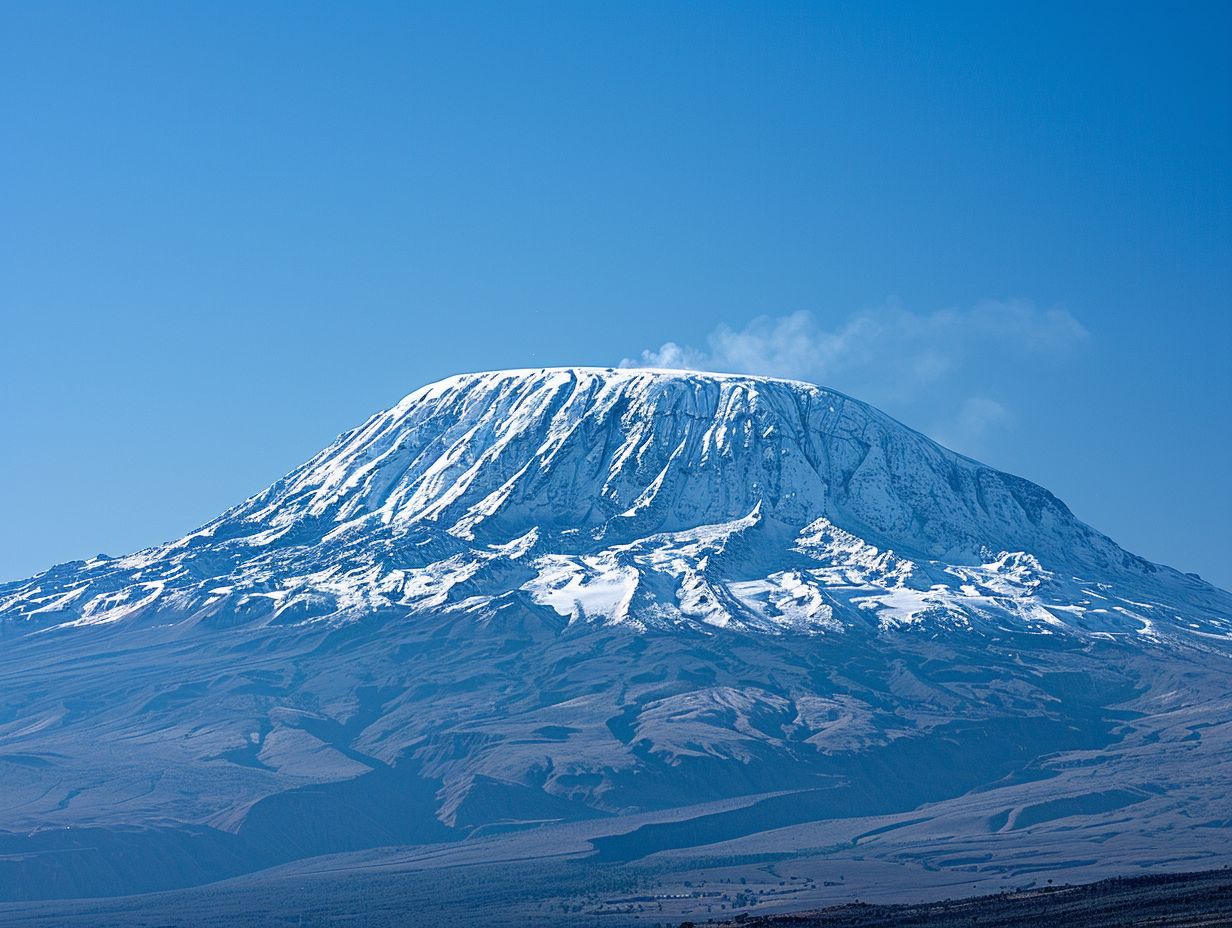
Physical preparation is crucial for climbers tackling the high altitude and cold temperatures on Kilimanjaro, requiring endurance training, cardiovascular exercises and strength conditioning to build the necessary stamina for the challenging ascent.
A well-rounded training program is essential to prepare the body for the strenuous demands of high-altitude trekking. Incorporating exercises that target core strength, leg muscles and cardiovascular fitness is vital.
Focus on activities such as hiking with a weighted backpack to simulate the conditions on the mountain, interval training to improve cardiovascular endurance and core exercises like planks and Russian twists to enhance stability.
Engaging in activities like yoga or Pilates can improve flexibility and balance, crucial for navigating tricky terrain on Kilimanjaro.
Acclimatization Strategies for Cold Weather
Implementing effective acclimatization strategies is essential for climbers facing cold weather on Kilimanjaro, involving gradual ascents, hydration, and rest to adjust to the altitude and climate changes encountered during the climb.
Altitude adjustment plays a crucial role in acclimatization, with climbers needing to pace their ascent to allow their bodies to adapt gradually to the thinner air and reduced oxygen levels.
It’s recommended to follow the ‘climb high, sleep low’ technique, where climbers sleep at a lower altitude than their daytime trekking high point to aid in proper acclimation.
Hydration is key in combating altitude sickness as well. Staying adequately hydrated helps the body regulate temperature, oxygen delivery and aids in overall well-being during the climb.
Climbers are advised to drink at least 3-4 liters of water daily, while also refraining from excessive alcohol consumption, which can exacerbate dehydration at high altitudes.
Allowing sufficient time for acclimation is essential. Choosing routes with gradual ascents and rest days built into the itinerary can significantly improve the chances of successful acclimatization.
It’s common practice for climbers to undertake short, acclimation hikes during rest days to aid in the adjustment process and prepare their bodies for higher altitudes.
Tips for Surviving Cold Nights on Kilimanjaro
Surviving cold nights on Kilimanjaro requires effective techniques such as staying hydrated, using warm sleeping gear and maintaining body heat to prevent hypothermia and ensure a comfortable rest during the expedition.
To enhance hydration levels, climbers should carry an insulated water bottle to prevent fluids from freezing in the frigid temperatures. Choosing appropriate clothing such as moisture-wicking base layers, thermal insulation and waterproof outer layers can significantly aid in retaining body warmth.
It’s crucial to insulate the sleeping area from the cold ground by using closed-cell foam pads and a high-quality sleeping bag rated for sub-zero temperatures. Properly ventilating the tent to minimize condensation buildup can also help regulate internal temperatures and reduce moisture accumulation.
Staying Warm While Sleeping
To stay warm while sleeping on Kilimanjaro, climbers should use high-quality sleeping bags, insulated mats and thermal layers to retain body heat and ensure a comfortable rest despite the cold nighttime temperatures.
Proper sleeping gear is essential for a successful climb. A down sleeping bag with a rating for cold temperatures around 0°F (-18°C) or lower is ideal for the extreme conditions on the mountain. Pair this with an insulated sleeping mat for additional warmth and comfort.
Wearing moisture-wicking base layers is crucial to keep sweat away from the body, as dampness can quickly lead to chilling. Layering with fleece or wool garments provides added insulation against the cold mountain air.
Preventing Hypothermia and Frostbite
Preventing hypothermia and frostbite on Kilimanjaro requires climbers to recognize early symptoms, maintain dryness and protect exposed skin to avoid cold-related injuries and ensure a safe and successful climb.
One of the key factors in preventing hypothermia and frostbite is proper layering of clothing. Wearing moisture-wicking base layers followed by insulating layers and a waterproof outer shell helps regulate body temperature and keeps climbers dry.
Staying hydrated and fueling the body with high-energy foods can aid in maintaining core warmth.
When climbing in cold environments like Kilimanjaro, it’s crucial to be aware of warning signs such as intense shivering, numbness, confusion and pale skin. If any of these symptoms occur, it is essential to take immediate action by seeking shelter, changing into dry clothes, and consuming warm fluids to help raise body temperature.
First-aid measures for mild cases of frostbite include gently rewarming the affected areas using body heat or warm water, avoiding rubbing or massaging the frostbitten skin. For severe cases, seeking professional medical assistance is recommended to prevent tissue damage and complications.
To minimize the risk of hypothermia and frostbite during the expedition, climbers should carry extra layers of clothing, hand warmers and emergency supplies.
Being proactive in protecting oneself from the cold, such as using insulated gear and taking regular breaks to warm up, can significantly reduce the chances of cold-related injuries while ascending Kilimanjaro.
Proper acclimatization, adequate rest, and monitoring weather conditions are essential elements in preventing cold-related illnesses. By staying vigilant, prepared, and informed, climbers can enjoy a safe and successful trek up Kilimanjaro, minimizing the threat of hypothermia and frostbite.
Conclusion: Experiencing the Cold on Kilimanjaro
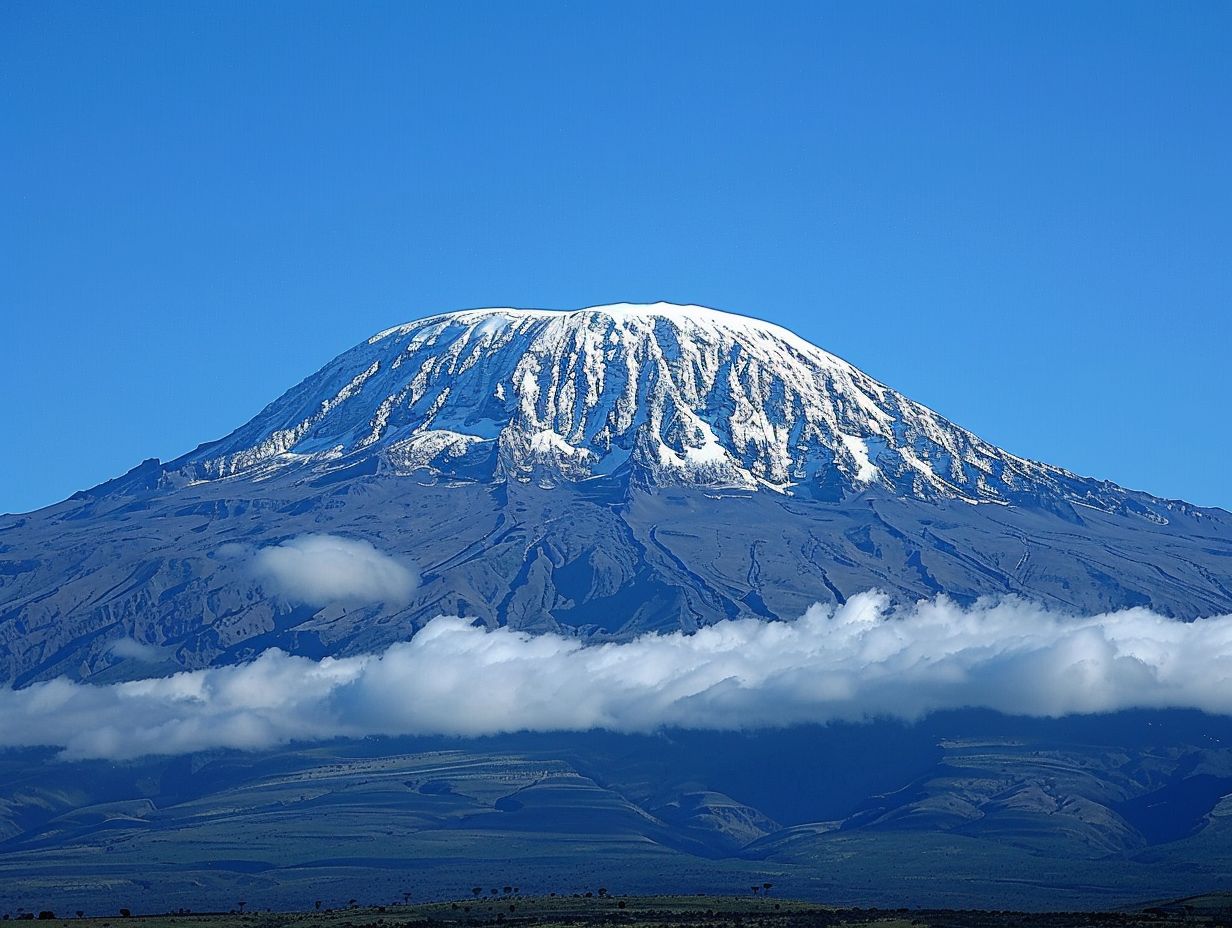
Experiencing the cold on Kilimanjaro is a challenging yet rewarding endeavor where climbers face extreme temperatures and weather conditions, requiring preparation, resilience, and proper gear to conquer the majestic peak.
Mount Kilimanjaro, standing tall as Africa’s highest point and one of the Seven Summits, presents adventurers with a formidable test of their physical and mental capabilities.
The bone-chilling temperatures at high altitudes, often dropping below freezing demand strategic planning and acclimatization. Battling frostbite and hypothermia becomes a very real concern during the ascent.
Yet, the unparalleled thrill of reaching Uhuru Peak, the summit on Kilimanjaro, under the infinite blanket of stars, makes the frigid journey immensely gratifying.
Frequently Asked Questions
How Cold Does It Get On Kilimanjaro?
The temperature on Kilimanjaro varies depending on the altitude and time of year. At the summit, temperatures can reach as low as -20 degrees Celsius (-4 degrees Fahrenheit) during the day.
What is the coldest time of year on Kilimanjaro?
The coldest months on Kilimanjaro are typically January and February, with temperatures dropping to around -25 degrees Celsius (-13 degrees Fahrenheit) at the summit.
Is it possible to experience sub-zero temperatures on Kilimanjaro?
Yes, it is possible to experience sub-zero temperatures on Kilimanjaro, particularly at higher altitudes. It is important to pack appropriate cold weather gear to stay warm and safe during the climb.
How does altitude affect the temperature on Kilimanjaro?
As you climb higher on Kilimanjaro, the temperature drops due to the decrease in air pressure. This means that the summit will be much colder than the base of the mountain.
Are there any precautions I should take for the cold temperatures on Kilimanjaro?
Yes, it is important to be prepared for cold temperatures on Kilimanjaro by packing warm layers, gloves, hats, and other cold weather gear. It is also important to stay hydrated and listen to your guide’s advice on how to handle the cold weather.
Can I still climb Kilimanjaro if I am not used to cold weather?
It is recommended to have some experience with cold weather before attempting to climb Kilimanjaro. However, with proper preparation and gear, it is possible for those who are not used to cold weather to successfully climb the mountain. It is important to train and prepare physically, mentally, and with the appropriate gear before attempting the climb.